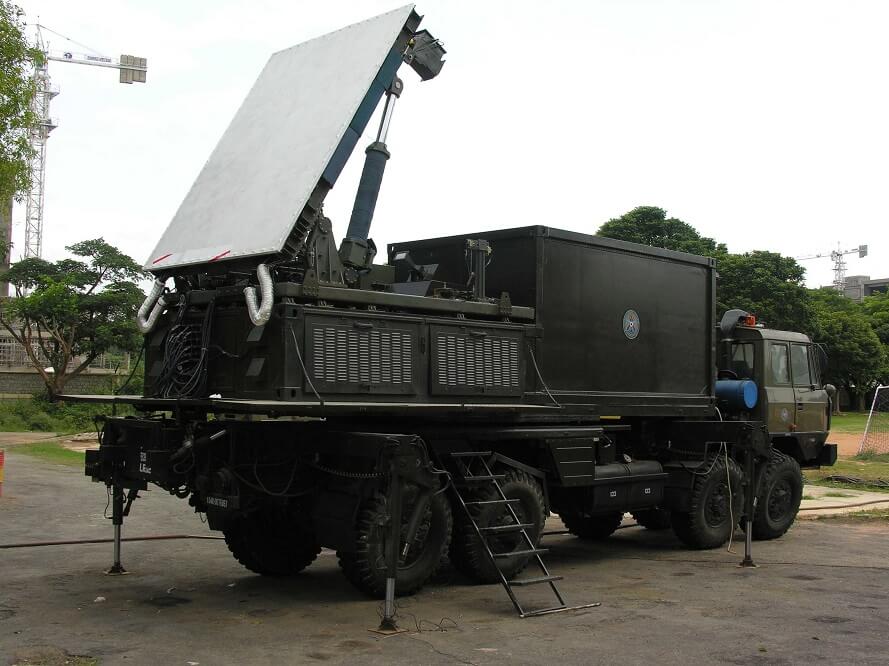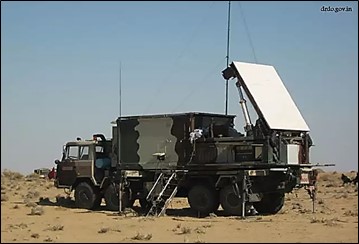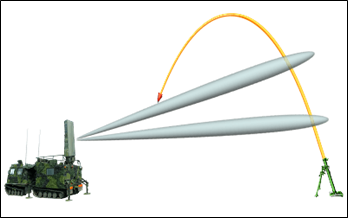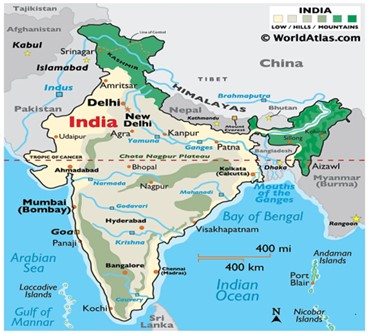
SWATHI WLR: Aatmanirbhar in Elusive Weapon Locating Capability

The Kargil War of 1999, amongst its many lessons, brought to the fore the importance of accurate indirect-fire weapon location, in order to neutralise the adversary’s Artillery assets and minimise casualties to own troops on ground. Lack of adequate capability in this regard proved costly, as most of the casualties to Indian troops were from the adversary’s Artillery engagements, facilitated by the advantage of terrain in terms of heights for observing/correcting fire on the POK side and the lack of real estate for deployment of own artillery in the sector.
India’s weapon locating capabilities at that time were, as can best be put, marginal and it was only possible for the Indian Army (IA) to locate low velocity enemy mortar rounds with UK’s Cymbeline Mortar Locating Radar that the Indian Artillery had in its inventory. A further disadvantage was the fact that the Pakistan Army was at that time operating the US AN/TPQ 36 Weapon Locating Radar (WLR) (essentially a Mortar Locating Radar that was also capable of locating guns fired in high angle), contracted from US in the mid-1980s and capable of locating most indirect-fire weapons across their operating ranges with a high degree of accuracy (interestingly, the nomenclature of the radar breaks up as follows- AN indicates Army/Navy(Marines), ‘T’ stands for transportable, ‘P’ stands for position -finder, ‘Q’ stands for special/multipurpose radar [WLR in this case] and 36/37 stand for the version of the radar). It became evident that, in order to minimise casualties in any future conflict, it was necessary for the IA to acquire similar frontline capability in weapon location.
To the credit of the IA is the fact that the requirement of such radars were repeatedly projected since the 1980s and the AN/TPQ 36/37 WLRs were evaluated as far back as 1989. However, bureaucratic red-tapism and the post-Pokhran sanctions (PPS) undermined any attempts at fructification of this requirement and all progress towards such acquisition was brought to a halt. A Request for Proposal (RFP) for acquisition of WLRs was floated by MoD in 1995, which did not see fructification. Another RFP was floated in 1998 for emergent purchase. However, out of the three contenders (AN/TPQ-36/37 from Hughes [later Raytheon], US; Thomson CSF from France and ISKARA from Ukraine), US and France withheld their response as a consequence of the PPS and negotiations with Ukraine remained inconclusive. Such was the gravity of the foregoing, that the Parliament Standing Committee on Defence opined on 18 April 2000, in its report tabled in both Houses of Parliament, that it “was seriously concerned by the degree of seeming casualness shown by the Defence Ministry in this regard” and that “the Government should take immediate steps to equip the Army with this Radar”. This scathing observation catalysed the MoD into renewing efforts at acquisition and simultaneously tasking DRDO in April 2002 to commence development of an indigenous WLR, with a sanctioned amount of INR 200 Million within a timeframe of 40 months. India, in an all-out push to acquire this capability, subsequently inked an agreement with M/s Raytheon of US in 2002, post lifting of sanctions a year earlier- the first major Government-to-Government deal for military equipment (and part of an extended wish-list) between the two countries under the Foreign Military Sales (FMS) Program to purchase eight AN/TPQ-37 WLR (with greater range/locating capability as compared to the earlier AN/TPQ 36 version in service with Pakistan) for US $140 million. An additional four systems were ordered, with the total value of the contract topping out at a staggering US $200 million- close to INR 10 Billion even at then prevalent exchange rates! Training of IA personnel was initially carried out with the help of two older radars loaned from the US. The entire contract, tailor-made for Indian conditions, was realised by May 2007.

Source:drdo.gov.in
While the AN/TPQ 37 deal did boost India’s capability in weapon location, no Transfer of Technology clause was included in the deal and further requirements of the IA were to be met by the planned indigenous WLR, SWATHI. High acquisition and maintenance costs of the US radars further accelerated in-house efforts towards developing this niche capability. With design/ development of SWATHI by the Electronics & Radar Development Establishment (LRDE) of DRDO having commenced, MoD expressed an intent in January 2003 to procure 28 pieces from Bharat Electronics Limited (BEL), the designated manufacturer of the system.
Aero-India 2003 saw the first prototype of SWATHI being unveiled. User-trials commenced in 2005 and in 2006, post advanced user trials, the WLR was announced to be ready for series production. User-trials in adverse Electronic Warfare environment and simulated operational conditions continued, till the IA announced acceptance of the WLR in June 2008. SWATHI was formally handed over to the IA by DRDO in March 2017, at which time four pieces were already deployed along the Line of control opposite Pakistan as part of user trials, which had succeeded in effectively locating the latter’s hostile Artillery fire.
In March 2020, Armenia contracted four SWATHI WLRs for an amount of US$ 40 Million, preferring it over its Russian and Polish competitors, likely as it delivers equitable performance at a much lower cost. These have since been delivered, as have all 28 SWATHI that were contracted for the IA. This has ensured that most SATA units are now equipped with WLRs, thereby significantly enhancing own weapon locating capabilities opposite Pakistan and China and consequently reducing own vulnerability to hostile Artillery fire.
Product Design
Concept. The SWATHI WLR is primarily designed for locating hostile Artillery weapons including gun, mortars, and rockets. In its secondary role, the WLR also tracks and corrects friendly Artillery fire. SWATHI electronically scans a designated sector at very high scan-rates (multiple times a second). As soon as an incoming projectile is detected during its initial upward trajectory prior to reaching the apex, the system automatically acquires and classifies the threat and initiates a track sequence, while continuing to search for new targets. The incoming round’s trajectory is tracked, and a computer program analyses the track data and then extrapolates the observed trajectory backwards towards the weapon that fired the round. This calculated point of origin is then transmitted via the existing Artillery command/ control network, to enable own Artillery to quickly and accurately engage the detected hostile weapon system. A similar function is used to observe trajectory of own Artillery rounds and locate where own shells have landed, in order to correct this fire onto the intended target.

Concept Diagram Showing Interception of Hostile Artillery Trajectory
by WLR Radar Lobes (Scans) in order to Extrapolate the Point of Origin: Source-radartutorial.eu
SWATHI Design Architecture. Swathi is a C Band, passive electronically scanned phased array (PESA)radar- a radar in which the beam of radio waves can be electronically steered to point in different directions. C band radars operate on a wavelength of 4-8 cm and a frequency of 4-8 GHz, due to which the radar antenna does not have to be very large. The PESA Radar of the SWATHI has a single transmitter and power source (40 kW), unlike the Active Electronically Scanned Array (AESA) Radar of the TEJAS Light Combat Aircraft, which can have multiple power/ transmission modules. During tests of the Aakash Surface to Air Missile (SAM) in the early 2000s, it was observed that the Rajendra Radar (fire-control radar developed by DRDO for the Aakash SAM System) was able to detect and track artillery shells being test fired at a nearby range. Based on this observation, LRDE scientists were able to adapt the Rajendra Array into the SWATHI WLR. The biggest technological challenge in the design of SWATHI lay in achieving high probability of location for all calibres (sizes) of projectiles with low radar cross section, when fired in high or low angle (elevation). This was addressed by a complex array design and stringent algorithms which make the radar able to work effectively even under severe electronic clutter and high density fire environment and which take environmental parameters into consideration while estimating both launch and impact points for desired accuracy in weapon-locating/ fire-direction mode. The SWATHI System is configured on two 8×8 BEML TATRA vehicles- the radar vehicle and the power source-cum-Built In Test Equipment (BITE) vehicle (PSB). The radar vehicle houses the electronics, radar shelter, antenna and cooling mechanisms, which can be rotated or slewed to the desired orientation. The PSB vehicle contains two diesel generator sets and a radar target simulator. The WLR can be deployed within 30 minutes and in case of threat, can be quickly moved out/ redeployed. It is designed to operate in harsh environments ranging from -20 to +55°C, in hot/humid conditions, can be safely stored from -40 to +70°C and can operate in high-altitude areas (HAA). When deployed, the radar array is set at a pre-determined mean bearing for reference, from where the array can scan +/- 45º ( total 90º). The radar antenna can be further turned (slewed) by 135º either side ( total 270º)- this gives a total of 360º coverage. This change in orientation can be achieved in as low as 30 seconds to respond to imminent threats. Tracking of the target is achieved with single-pulse signals and the in-built pulse compression features improve the radar’s low probability of interception (LPI). Its processors perform real-time signal processing on the acquired data, thus allowing upto 7 targets to be tracked simultaneously. SWATHI can track rounds fired at both low and high angles, and at all aspect angles – from behind or towards the radar, or at an oblique angle to the array. It is capable of directing simultaneous fire from a number of deployed Artillery fire units. Target information of upto 99 targets is presented as a high resolution multi-mode colour display on the ruggedised power PCs in real time and can be overlaid on a digital map. The WLR can store a large (100 km2) digital map for display purposes. SWATHI is networked with affiliated Artillery units through the SHAKTI Artillery Combat, Command and Control System (ACCCS), which in turn automates and facilitates decision support for all the operational aspects of Artillery functions from the Corps down to the Artillery Battery (subunit) level in a networked environment.
A comparative table of features of SWATHI, AN/TPQ 37 and Chinese made SLC-2, in use with Pakistan, is displayed below:-

Future Course
The current PESA single-transmitter configuration comes with the inherent limitation of relatively slower scan/ track rate and higher probability of jamming as compared to an AESA radar, which is configured with multiple module based transmitters. Work is presently ongoing to configure an AESA based WLR to improve performance/ survivability and eradicate the aforementioned disadvantages.
Trials of a new HAA version of the SWATHI are presently being planned, with improved manoeuverability to negotiate steep gradients/ restricted deployment spaces as well as obviate certain performance observations noticed in such areas.
Conclusion
SWATHI WLR is sure to prove a game changer in the ongoing skirmishes along the LoC/ LAC as well as in any future conflict. This is so as own experience in Operation VIJAY has proved conclusively that efficacy of artillery engagements, due to their lethality and devastation and have a major bearing on outcomes of conflicts in our context. The world-beating capabilities of this indigenous WLR, which would be further enhanced with the design upgrades mentioned, will establish the centrality of accurate machine-enabled hostile weapon location and direction of own artillery fire as a battle-winning factor in present and future conflicts.
Disclaimer
The opinions expressed in this article are the author’s own and do not reflect the views of Chanakya Forum. All information provided in this article including timeliness, completeness, accuracy, suitability or validity of information referenced therein, is the sole responsibility of the author. www.chanakyaforum.com does not assume any responsibility for the same.
Chanakya Forum is now on . Click here to join our channel (@ChanakyaForum) and stay updated with the latest headlines and articles.
Important
We work round the clock to bring you the finest articles and updates from around the world. There is a team that works tirelessly to ensure that you have a seamless reading experience. But all this costs money. Please support us so that we keep doing what we do best. Happy Reading
Support Us





















POST COMMENTS (3)
Nagashayana
ravi
Mukesh.Naik